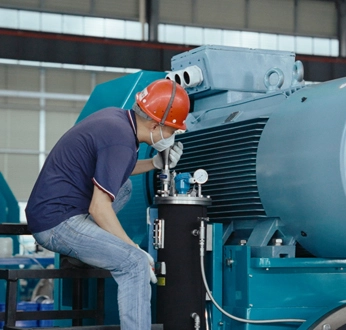
The size of the pin is crucial to the grinding performance and working efficiency of the pin bead mill, the common wet grinding equipment. Changes in pin size will directly affect the various parameters of the bead mill, including resistance, power consumption, and motor load.
The larger the pins, the larger the contact area with the agitator shaft. If the pins become longer and thicker, the contact area between the pins and the shaft increases, which will cause an increase in friction. Resistance will likely increase accordingly. On the other hand, the agitator shaft, the central axis connected to the bead mill drive motor, holds all the pins and requires more rotational energy. In this way, the power required by the bead mill to grind the slurry will increase. This can be a huge load on the motor, which can cause the motor to overload or even be damaged. Therefore, a reasonable selection of the pin size based on the characteristics of the grinding material is necessary to ensure the smooth function of the bead mill.
The pin size is also converted to the power consumption of the bead mill. As mentioned above, the resistance will increase due to the large size of the pin. The bead mill needs more electricity to overcome this resistance during grinding. Therefore, the power consumption of the bead mill will increase accordingly. In other words, the bead mill consumes more electricity if the pin gets longer and thicker, increasing the running cost.
Both resistance and power consumption directly affect the working efficiency of the agitator bead mill. Although the longer and thicker pins provide larger shear areas with the grinding slurry which performs better grinding results, the increase in resistance and consumption can lower the grinding speed. So the balance between grinding results and grinding speed is also what you need to consider when choosing the pin size.
In addition, the maintenance of the bead mill is related to the size of the pin. Larger pins can cause greater wear, which can increase the cost of maintenance and replacement. On the contrary, small pins have less wear, prolonging the service life of the bead mill.
In summary, pin size has an important influence on grinding performance and working efficiency for the pin bead mill. An increase in pin size will lead to an increase in resistance and power consumption, thus changing the working efficiency of the bead mill. When purchasing and using a bead mill, selecting the appropriate rod or pin size according to the grinding requirements is important to ensure normal operation and efficient grinding from the bead mill.
